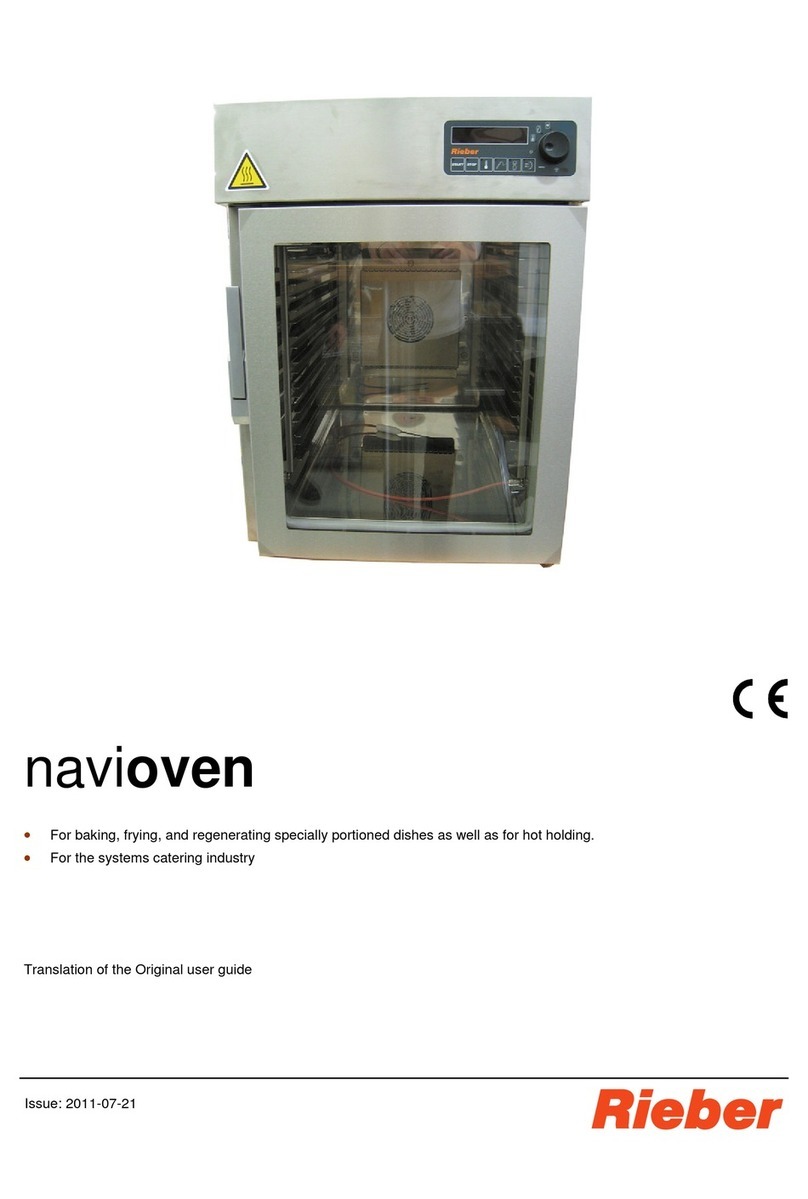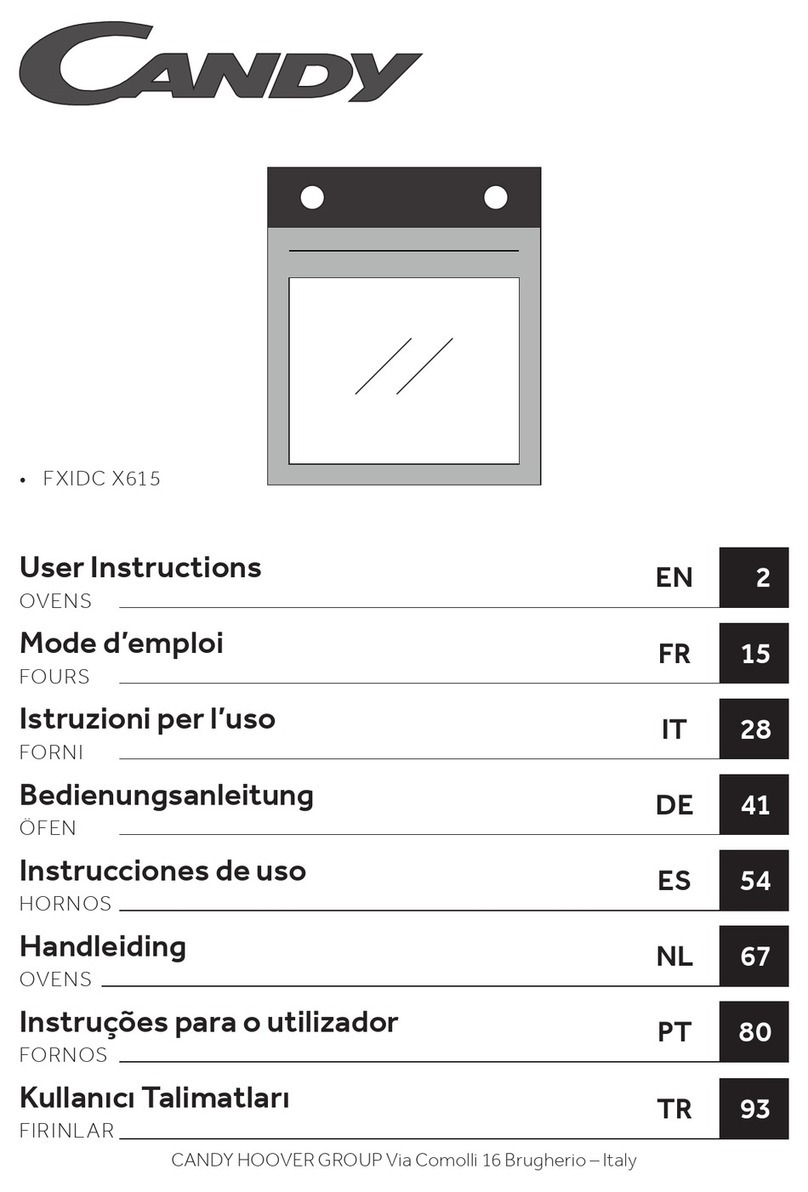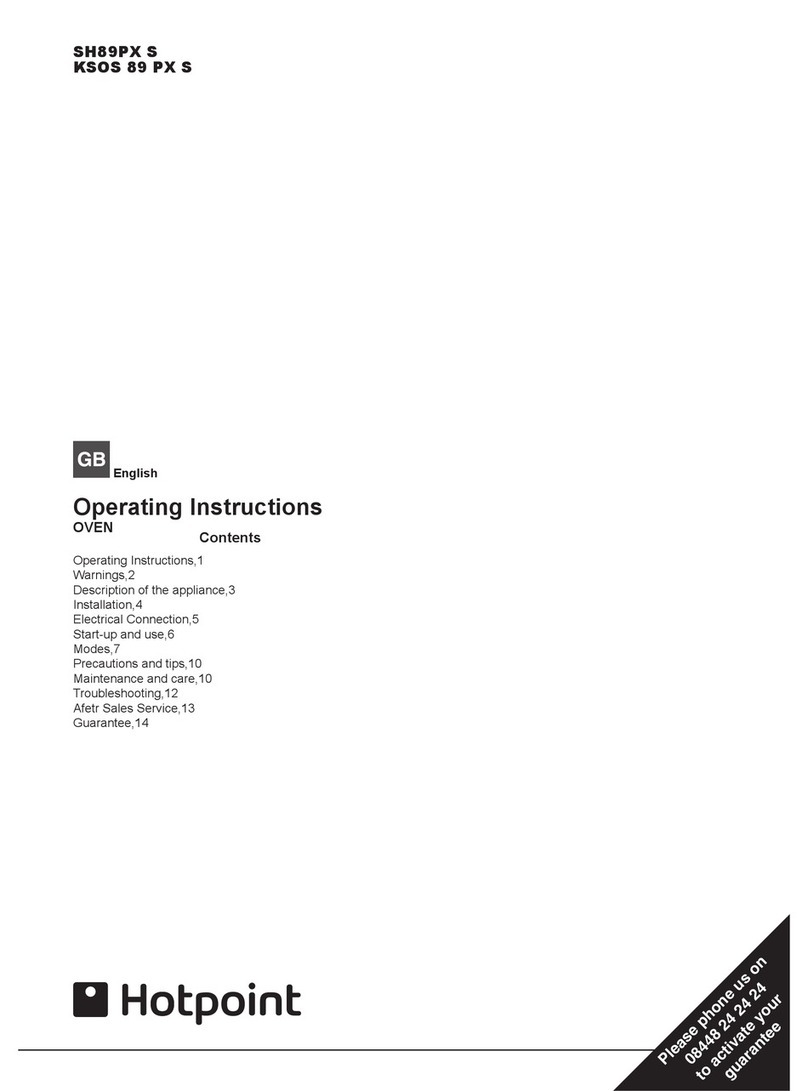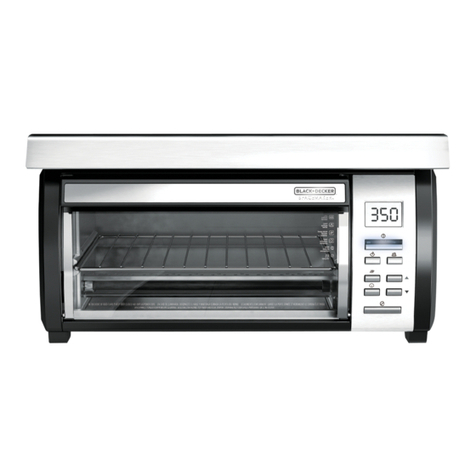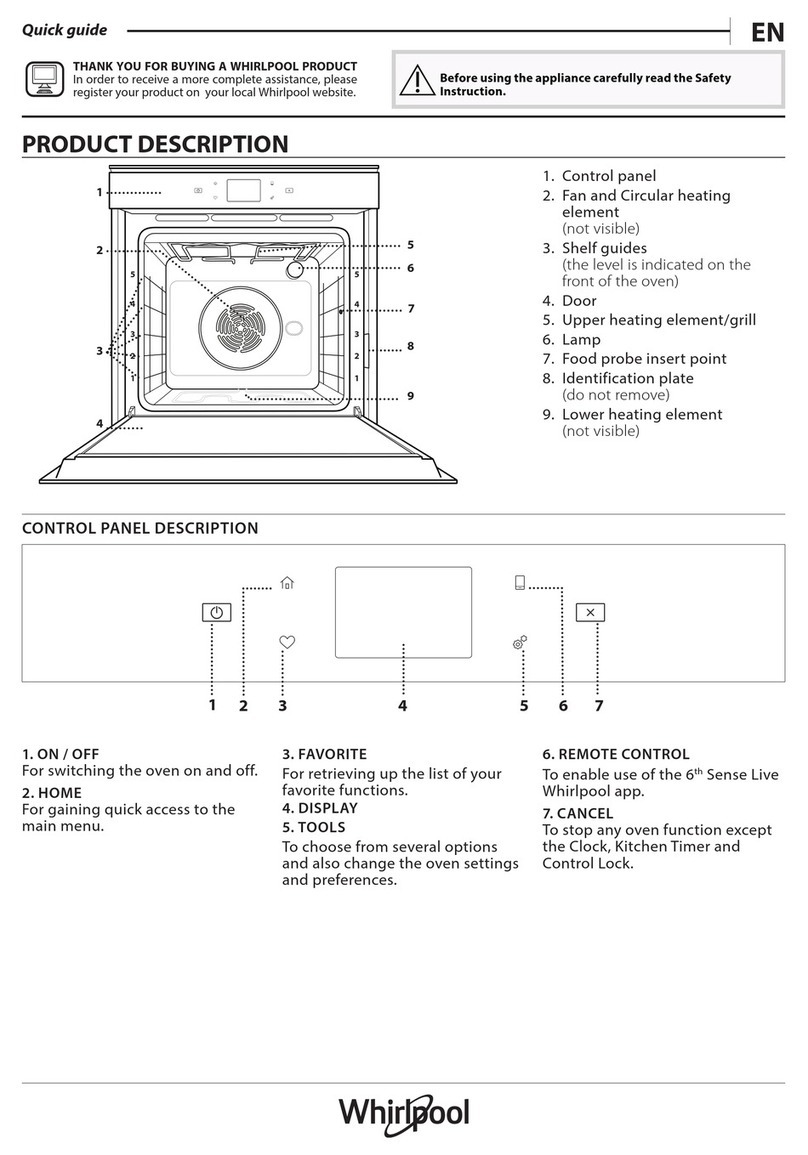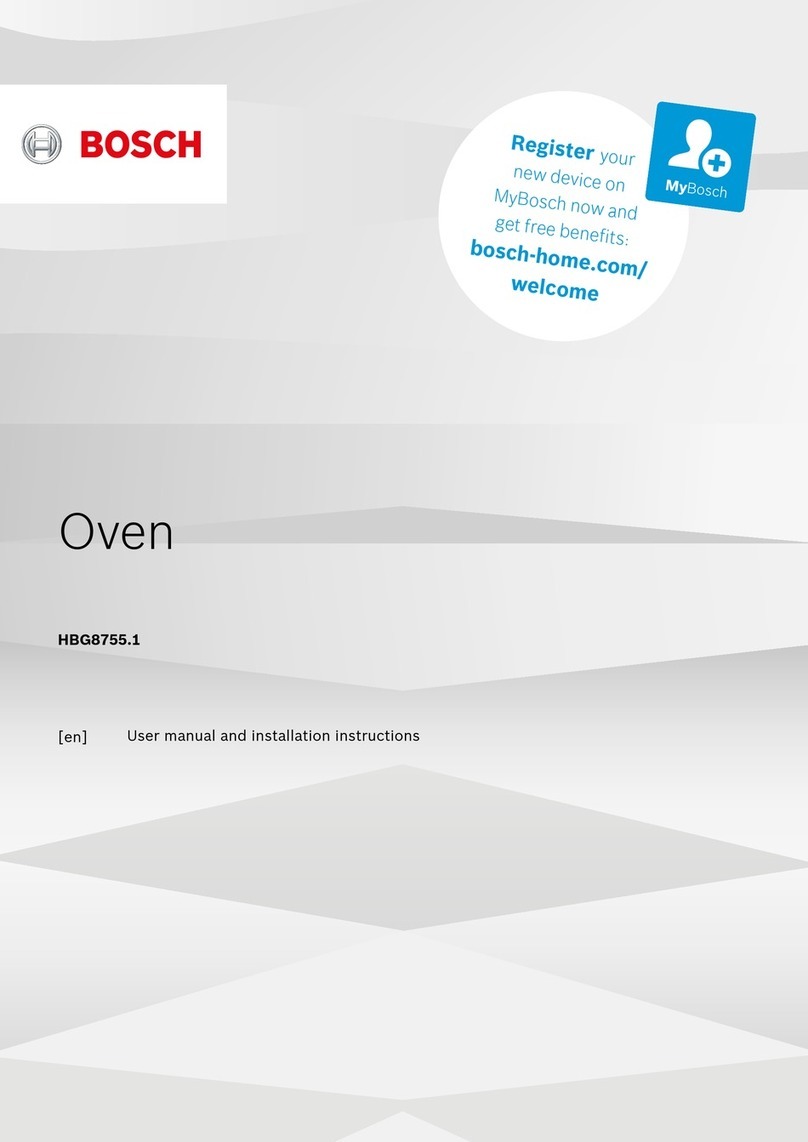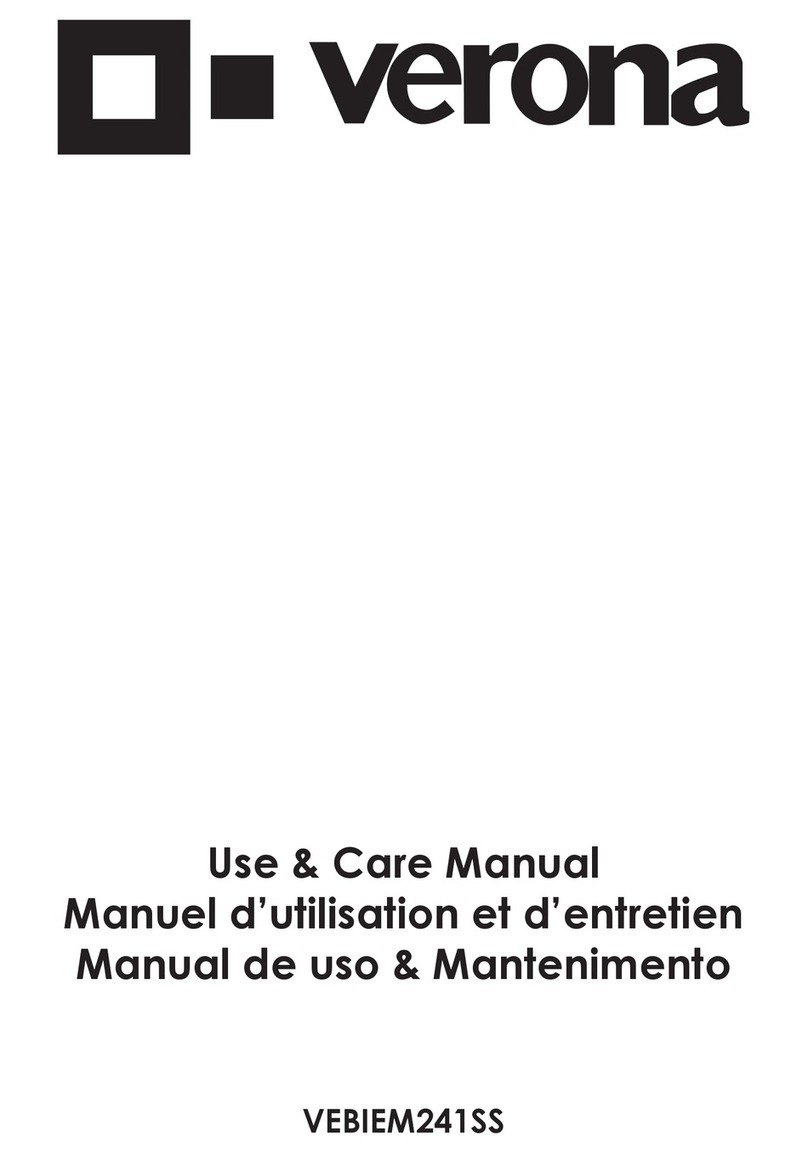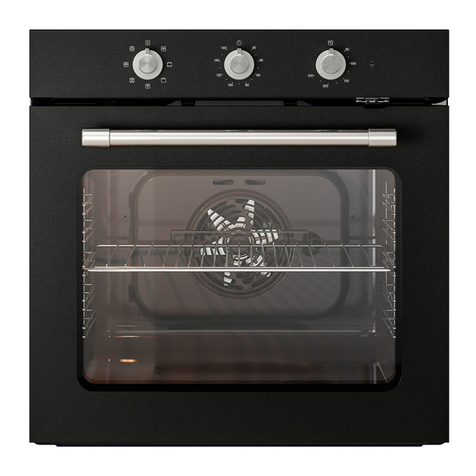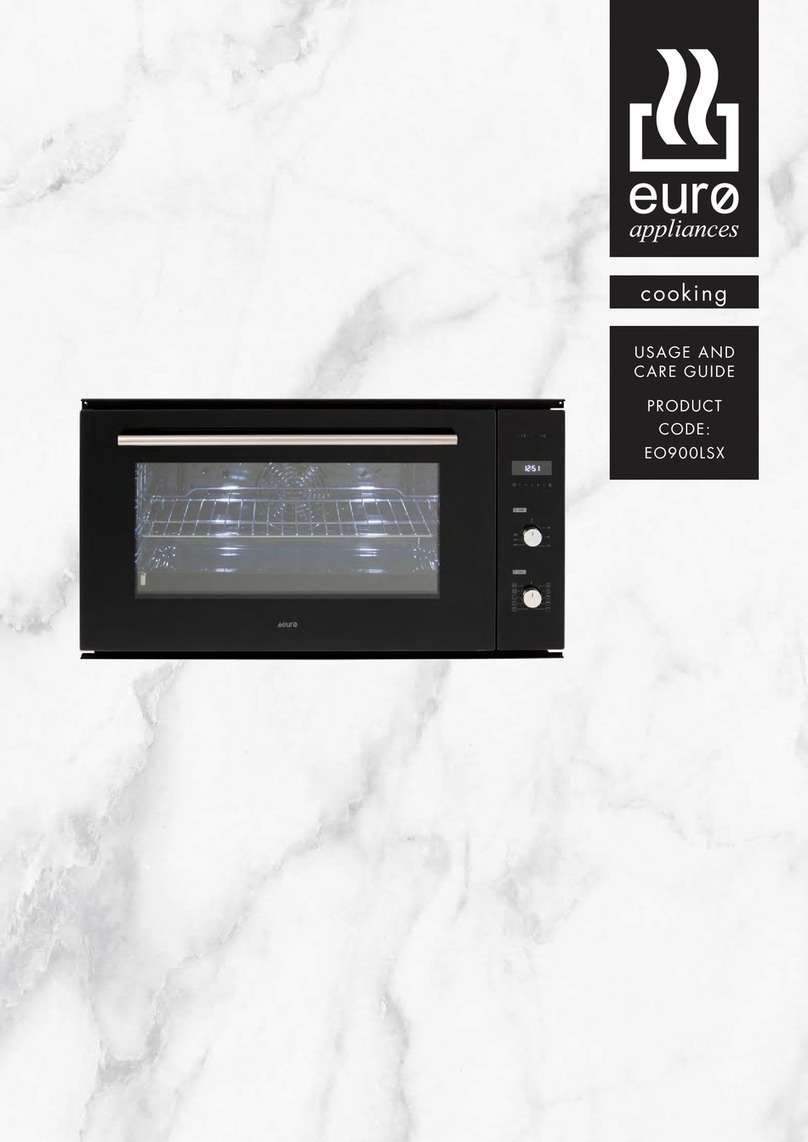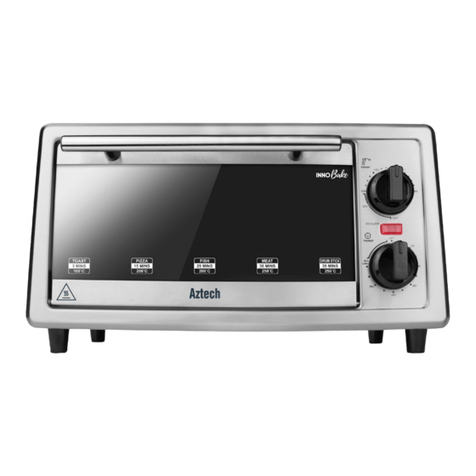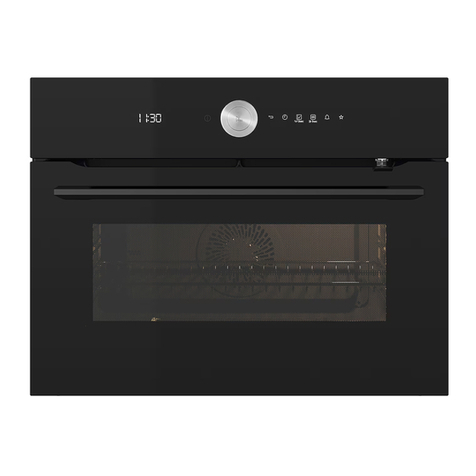Rieber navioven User manual

Issue: 2018-06-12
For baking, roasting and regenerating specially portioned food and for keeping food warm.
For system gastronomy
Observe the operating instructions
Translation of the Original Operating Instructions
DOWNLOAD: USER MANUAL
QR code on type plate

Contents
2
Rieber GmbH & Co. KG
Our solutions guarantee high quality, safety and, above all,
excellent energy efficiency and cost effectiveness.
Contents
1Revision Index ................................................................................................................................................. 3
2Important Information ..................................................................................................................................... 3
2.1 Using this guide..................................................................................................................................................... 3
2.2 Representation conventions in the text................................................................................................................. 4
2.3 Structure of safety instructions.............................................................................................................................. 4
3General Safety Instructions............................................................................................................................ 5
3.1 General behaviour................................................................................................................................................. 5
3.2 On use of electrical appliances............................................................................................................................. 5
3.3 Operator's duties................................................................................................................................................... 6
3.4 Personnel qualification requirements.................................................................................................................... 7
3.5 Provide protective equipment for personnel ......................................................................................................... 7
3.6 Appliance-specific safety instructions ................................................................................................................... 8
3.7 Product identification........................................................................................................................................... 10
3.8 Information about regulations to be followed ...................................................................................................... 10
3.9 Instructions on behaviour in an emergency........................................................................................................ 10
4Purpose .......................................................................................................................................................... 11
5Description of device .................................................................................................................................... 12
5.1 Designation ......................................................................................................................................................... 12
5.2 Technical data..................................................................................................................................................... 15
6Before First Use............................................................................................................................................. 16
6.1 Transport............................................................................................................................................................. 16
6.2 Commissioning.................................................................................................................................................... 16
7Use.................................................................................................................................................................. 19
7.1 Safety information with regard to use ................................................................................................................. 19
7.2 Pour drinking water into the water tank. Top it up regularly. .............................................................................. 20
7.3 Select program.................................................................................................................................................... 21
7.4 Start cooking process.......................................................................................................................................... 21
7.5 Change settings during operation....................................................................................................................... 22
7.6 Cancel cooking process...................................................................................................................................... 22
7.7 Keep food warm (HOLD)..................................................................................................................................... 23
7.8 Set date and time................................................................................................................................................ 23
7.9 How to switch off the navioven ........................................................................................................................... 24
7.10 Operation of the navioven function keys............................................................................................................. 24
7.11 The navioven programs ...................................................................................................................................... 27

Revision Index
Rieber GmbH & Co. KG
3
8Cleaning, maintenance and care ................................................................................................................. 34
8.1 Safety information relating to cleaning, maintenance and care.......................................................................... 34
8.2 Cleaning agents for stainless steel..................................................................................................................... 36
8.3 Choose the correct cleaning method.................................................................................................................. 37
8.4 Overview of cleaning and maintenance intervals ............................................................................................... 39
8.5 Pump residual water out of the appliance, rinse the appliance.......................................................................... 40
8.6 Cleaning.............................................................................................................................................................. 41
8.7 Descale the appliance as required ..................................................................................................................... 45
8.8 Keep ready for next use in dry condition ............................................................................................................ 46
9Fault - What now? ......................................................................................................................................... 47
10 Warranty and liability .................................................................................................................................... 49
11 Excerpt from the EU Declaration of Conformity......................................................................................... 50
12 Manufacturer's address................................................................................................................................ 51
13 Brief instructions .......................................................................................................................................... 52
1 Revision Index
Revision
Change
2011-03-31
First issue
2011-05-06
Review of controls
2011-07-05
Addition to setting time and date, control images
2011-09-19
8.9.5 Note inserted referring to 2 different saving procedures
2012-03-23
Safety note changed on page 30
2012-12-10
Technical data on page 6; images replaced
2017-08-01
Hold function, 2-stage door handle and pump function;
Register, operating manual structure; EU Declaration of
Conformity; Protective cap for core temperature sensor,
maintenance
2018-06-12
Türverschluss auf Seite 8 entfällt
2 Important Information
2.1 Using this guide
This guide contains important information about how you can use the appliance safely and correctly.
►Read the operating instructions before first using the product.
►Keep this guide in a safe place and pass it onto the next owner should you wish
to part with the product.
If there are any shortcomings in your opinion, please do not hesitate to let us know. With your help, we
will try to become even better.

Important Information
4
Rieber GmbH & Co. KG
2.2 Representation conventions in the text
. . . Highlighting . . . , is a text fragment which needs to be emphasized
Lists are represented in this way.
Instructions on certain actions are represented in this way.
See ‘. . . ’ , cross-reference is represented in this way.
CAUTION
indicates potential damage to property without any personal injury.
Failure to follow these instructions may cause damage to property.
User tip
►Useful information or tip
2.3 Structure of safety instructions
The signal words DANGER - WARNING - CAUTION classify the degree of risk of bodily injury in an actual
situation. You can avoid injury by complying with the behavioural rules provided.
The warning triangle symbol indicates a ‘General Danger’.
DANGER
indicates imminent danger.
Failure to follow these warning instructions will result in serious bodily
injury or even death.
WARNING
indicates a potentially hazardous situation.
Failure to follow these warning instructions may cause serious bodily
injury or even death.
CAUTION
indicates a potentially harmful situation.
Failure to follow these warnings may cause minor bodily injury.

General Safety Instructions
Rieber GmbH & Co. KG
5
3 General Safety Instructions
This section covers residual risks and hazards associated with the intended use of the appliance. We have
provided a list of all generally valid safety instructions which must be followed.
In the following section, safety information relating to a particular operation or situation is placed before the
appropriate operation step or description of the situation.
3.1 General behaviour
This appliance meets the current state of the art and complies with all acknowledged technical safety-
related regulations. Nevertheless hazards may still arise.
Only use this appliance when it is in fault-free condition and according to the instructions in this
user guide.
During all phases of the product's life please ensure that the product is safely integrated into its
environment.
Refrain from rearranging or changing the device.
3.2 On use of electrical appliances
Safety instructions according to EN 60745-1:
Work area
Keep your work area clean and tidy. A messy or unlit work area can cause accidents.
Keep children and other people away from the area when work is being carried out.
Electrical safety
The plug on the unit must fit in the socket. Do not modify the plug in any way. Never use
an adapter in combination with earthed appliances. Using an unmodified plug and a
suitable socket will reduce the risk of an electric shock.
Avoid bodily contact with earthed surfaces such as pipes, heating units, cookers and
refrigerators. The risk of an electric shock is greater when your body is earthed.
Keep the device away from rain or wet. Allowing water to get into an electric appliance
will increase the risk of electric shock.
Do not use the cable for anything other than the intended purpose to disconnect the plug
from the socket. Always remove whilst holding onto the plug. Keep the cable away from
heat, oil, sharp edges or the moving parts of other appliances. Using damaged or tangled
cables increases the risk of electric shock.
When working with an electrical appliance outdoors, only use extension cables which are
permitted for outdoor use. Using an extension cable suitable for outdoor use reduces the
risk of electric shock.
Risk of fire as a result of heat build-ups possible. Unwind the cable from the cable drum
to prevent a possible heat build-up and/or cable fire. The coupling must have splash
protection, must be made of rubber or be rubber-coated. The cable cross-section must be
at least 1.5mm2.
Safety guidelines for persons
Be attentive and pay attention to what you are doing, act rationally when working with an
electrical appliance. Do not use the appliance when tired or under the influence of drugs,
alcohol or medication.
Just one moment of inattention whilst using the appliance can result in serious injury.
Make sure the appliance cannot be switched on unintentionally. Double check that the
main switch is in the "OFF" position before inserting the plug in the socket. Connecting
the appliance to the power supply while it is switched on can cause an accident.

General Safety Instructions
6
Rieber GmbH & Co. KG
Careful handling and use of electrical appliances
Never use an electrical appliance with a faulty switch. An electrical appliance which can
no longer be switched on or off is dangerous and must be repaired.
Keep unused electrical devices away from children. Do not allow the appliance to be
used by persons who are not familiar with it or persons who are not familiar with this user
guide. Electrical appliances are dangerous when in the hands of inexperienced persons.
Treat the device with care. Check that moving parts are functioning properly and do not
block; check whether parts are broken or damaged and impairing the functioning of the
device. Have any damaged parts repaired before using the appliance. Many accidents
are caused by poorly-maintained electrical appliances.
Use electrical appliances, accessories etc in accordance with these instructions and in a
manner that is specified for this particular appliance type. When using the appliance,
please take into account the working conditions and the work being carried out. Using
electrical appliances for other uses than that intended can lead to hazardous situations.
Service
Only have the device repaired by qualified and authorised staff. Only use original spare
parts. In this way you can ensure that the appliance remains safe.
3.3 Operator's duties
Operator
The operator is the person who operates the appliance for commercial or economic purposes either
himself/herself or lets others use it and bears the legal appliance responsibility for protection of the
user, staff or any third parties during operation.
Operator's duties
The appliance is used in commercial applications. For this reason, the operator of the appliance must
meet all legal duties relating to work safety.
In addition to the safety instructions in this guide, the safety, accident prevention and environmental
protection regulation applying to the application of the appliance must be complied with.
In particular, the following shall apply:
The operator must be familiar with the applicable work safety regulations and identify, by
carrying out a risk analysis, any additional hazards which are due to the place where the
appliance is used. These hazards must be addressed in the form of operating instructions
governing the operation of the appliance.
Throughout the period of use of the device the operator must check that the operating
instructions which he has compiled comply with the current regulations and adapt them if
necessary.
The operator must clearly regulate and define the responsibilities for installation, operation,
troubleshooting, maintenance and cleaning.
The operator must ensure that all employees who use the device have read and
understood these instructions. In addition, the operator must train the personnel and inform
them of the hazards involved at regular intervals.
The operator must provide the personnel with the necessary protective equipment and
issue mandatory instructions on wearing it.

General Safety Instructions
Rieber GmbH & Co. KG
7
In addition, the operator must ensure that the appliance is always in a perfect technical condition. For
this reason, the following shall apply:
The operator must ensure that the maintenance intervals defined in this guide are obeyed.
The operator must regularly check all safety devices for functionality and completeness.
The operator must ensure that the appropriate media connections are present.
The operator must ensure that structural safety measures are performed.
3.4 Personnel qualification requirements
Safe operation requires certain technical skills and personal qualification of each person.
The responsibility for organization lies with the ‘Designated Representative’ (operator).
According to EN 50110-1 a work supervisor is a person who is appointed to take direct
responsibility for the performance of work. If necessary, this responsibility can be assigned
partly to other persons. [...] The designated representative must instruct all persons
involved in the work on all hazards which may not be obvious for them’.
The work may only be performed by ‘instructed persons’ who have been trained
accordingly. Training, instructions must be repeated, proper understanding must be verified
(ideally by way of an appropriate test).
Only ‘Qualified Staff’are allowed to carry out repair work.
IEC 60204-1 defines qualified personnel as "persons who, on account of their training and
relevant experience are in the position to recognise risks and avoid potentially dangerous
situations."
Electrical work may only be carried out by trained and experienced electricians.
Electro-technically instructed persons may only work under the supervision of a qualified
electrician.
The Circulating air heater unit housing may only be opened/closed for the purpose of
thorough cleaning by appropriately trained and authorised operating personnel. NOTE: This
is only permitted by the manufacturer's service department during the guarantee and
warranty period.
Any repairs and/or overhaul during the warranty period may only be carried out by the
manufacturer´s service department.
‘Warranty and liability’, page 49
3.5 Provide protective equipment for personnel
Ensure that the personnel wear the personal protective equipment appropriate to the relevant
situation.
Wear sturdy shoes to prevent injuries.
Wear safety gloves to avoid burns at hands and arms.

General Safety Instructions
8
Rieber GmbH & Co. KG
3.6 Appliance-specific safety instructions
This chapter describes general, appliance-specific safety instructions. In the following section, additional safety
information relating to a particular operation or situation is placed before the appropriate operation step or
description of the situation.
3.6.1 Safety and monitoring devices
The device features a safety cut-out. The product switches itself off automatically in the
event of a fault in the control system..
To increase your safety we recommend that you install a residual current device with a
tripping current of 30 mA upstream of the appliance.
3.6.2 Transport
The navioven weighs around 45 kg. Risk of injury when lifting and carrying heavy loads.
Such work may only be carried out by suitable and appropriately trained personnel. If you are not
physically fit, consult your designated representative.
When transporting the appliance hold it at the handle. Transport the appliance with 2 people.
Only transport the appliance when empty, with the mains plug disconnected and the door closed.
User tip: Use the Rieber transport equipment range.
3.6.3 Risks involved in using the sharp core temperature sensor
WARNING
Risk of stab wounds when handling the pointed core temperature sensor.
►Be careful.
►Keep the core temperature sensor in a secure location, for example in the holder on
the left register. Do not leave the core temperature sensor lying around loose.

General Safety Instructions
Rieber GmbH & Co. KG
9
CAUTION
If the plug connector for connecting the core temperature sensor is not fastened, the
sensor may be contaminated; considerable damage is possible.
►Keep the electrical connection for the core temperature sensor closed.
►Use the dummy connector.
CAUTION
If the core temperature sensor is inserted into the ventilation grille of the circulating air
heater, the heater could be damaged; considerable damage is possible.
►Keep the core temperature sensor in a secure location, for example in the holder on
the left register. Do not insert the core temperature sensor into the grille of the
circulating air heater inside the appliance.
3.6.4 Risk of burns and scalds to hands, arms and face
Steam at temperatures of up to 200 °C is released at the back of the appliance. The temperature inside
the appliance can be up to +230 °C. The outside of the housing can reach temperatures of up to 65 °C.
Be careful.
When opening the door using the two-stage door lock allow steam to escape first of all, then open
completely.
Wear protective gloves.
Keep flammable materials away from the product.
3.6.5 Risk of fire and malfunction
Steam at temperatures of up to 200 °Cis released at the back of the appliance. The outside of the
housing can reach temperatures of up to 65 °C.
Observe minimum distance for the air circulation at the back panel, ≥10 cm.
Keep flammable materials away from the product.

General Safety Instructions
10
Rieber GmbH & Co. KG
3.7 Product identification
The type plate bears the legally required product data.
→ See back of the appliance.
Warning of hot surface
→ See front top left on the appliance, next to the control unit
Warning of electrical voltage
Warning. Unplug mains plug before opening the appliance.’
Languages German, English, French.
→ See back of the appliance.
Note on the distance to be observed at the back of the appliance, otherwise considerable
damage is possible.
→ See pictogram on the back of the appliance.
3.8 Information about regulations to be followed
In addition to this user guide there are a range of health and safety and other regulationsthat are
relevant for the operation of this cooking station; these include HACCP food hygiene regulations for
example.
3.9 Instructions on behaviour in an emergency
In an emergency, always turn the appliance off immediately.
First Aid for burns, scalds, cuts and electric shock
Inform yourself on this before commissioning the appliance.
Store the emergency equipment, including the relevant instructions, at a readily accessible place
near the place of use.
User tip
►You can find detailed information in the company's internal instructions.
►We recommend that half-yearly emergency training sessions should be carried out.

Purpose
Rieber GmbH & Co. KG
11
4 Purpose
This chapter provides information on the intended use of the product and warns against foreseeable misuse or
abuse, for your safety. Use the appliance for its intended use.
Generally, the following are intended uses for the product:
For system catering, catering, hotels, restaurants and school cafeterias.
Use as a mobile table-top appliance. The appliance is used stationary, without being
moved.
Use as a fitted kitchen appliance for installation in the Rieber ‘aircleansystem’.
Installation only intended and permitted by the Rieber company or a specialist dealer.
Installation by the operator is only permitted in exceptional cases and at the operator's own
responsibility.
For baking, cooking, cooking at core temperature, braising and regenerating meals
comprising specially portioned food and for keeping food warm.
The person responsible for the work, e.g. the chef, programs the navioven parameters.
Wear personal protective equipment such as protective gloves which will prevent you from
burning your arms or hands on hot parts such as heating elements, hot parts of the
appliance, objects and food.
For use by instructed persons only.
Prevent any predictable misuse and abuse:
Observe minimum distance for the air circulation at the back panel, ≥10 cm. Do not
obstruct the fresh air supply. Steam at temperatures of up to 230 °C is released at the back
of the appliance. The outside of the housing can reach temperatures of up to 65 °C. Ensure
suitable installation conditions.
Remove the protective sheath on the tip of the core temperature sensor before first use,
otherwise there is a risk of significant damage and malfunction.
Do not insert the core temperature sensor into the grille of the circulating air heater inside
the appliance.
Do not operate the appliance unsupervised. To prevent persons from burning themselves
on hot surfaces, use of the product in public, e.g. for self-service, should only be allowed
under supervision.
Installation only intended and permitted by the Rieber company or a specialist dealer, for
example in Rieber's ‘aircleansystem’ installation station. Installation by the operator only
permitted in exceptional cases and at the operator's own responsibility.
Not intended for private use at home.
Do not lean against or sit on the appliance.
Keep any combustible or explosive fluids away from heated appliances. Otherwise a fire or
explosion may occur.
Do not use to heat up a room.

Description of device
12
Rieber GmbH & Co. KG
5 Description of device
This chapter has interesting facts about the set-up and functionality of this appliance
5.1 Designation
All parts are named here to facilitate further understanding of the manual.
1 Door lock
2 Carrying handles
3 Water container
4 Control unit
5 Viewing window in the door
6 Core temperature sensor
7 Rubber feet
8 Circulating air heater
9 Left register with holder for
the core temperature sensor
10 Core temperature sensor
11 Dummy connector
12 Right register

Description of device
Rieber GmbH & Co. KG
13
Detail
Back
Electrical connection

Description of device
14
Rieber GmbH & Co. KG
The navioven control unit
4 Dial,
protrudes when switched off
6 POWER ON
11 STOP
12 START
Programs
1 Cook
2 Core temperature
3 Fan
5 Menu
Function keys
7 Humidification with steam / emptying,
cleaning
8 Time
9 Core temperature
10 Chamber temperature
Program 1: Cook
Chamber temperature, time and steam can be set.
Program 2: Core temperature
Core temperature, chamber temperature and steam can be set.
Program 3: Fan (passive cooling)
Passive cooling with cooling pellets + circulating air
Program 6: Menu
Stored programs can be selected.

Description of device
Rieber GmbH & Co. KG
15
Display
Examples of
displays
Meaning
The navioven is in Standby mode.
The POWER ON LED (6) flashes.
Display is black
Program XX is running.
In the lower menu bar, the Function keys flash indicating the most meaningful
adjustment options.
The current temperature is shown in the display.
F1 in the display indicates: A fault.
See ‘Troubleshooting’ chapter, page 47
Acoustic signal: 10 seconds before a task is run automatically, you will hear an
acoustic signal, e.g. 10 seconds before the cooking time is over.
5.2 Technical data
Rated voltage / mains frequency
1N AC 230V 50/60Hz
Heating capacity
3.2 kW
Ambient conditions
0°C to +80°C
Protection class
IP55 as per DIN EN 60529
(dust-protected, protected against access with a wire, protection
against water jets (nozzle) from any angle)
For installation outdoors a canopy or protection from penetrating
moisture is required.
Mass
approx. 45 kg
Dimensions (W x D x H)
730 x 450 x 560 mm
Temperature range
+20°C to +230°C
Water tank
0.5 litres
Support rails
7 pairs for max. 5 x 1/1 GN 65 mm deep
Detailed specifications for measurements, order number, accessories,
circuit diagrams, spare parts, wear and tear parts:
See catalogue/brochure
If you have any questions, please contact your local Rieber Service.

Before First Use
16
Rieber GmbH & Co. KG
6 Before First Use
This chapter describes the measures to be taken before use.
6.1 Transport
# Check/deal with any transport damage
Immediately after delivery, visually check the appliance for any transport damage.
Document any potential transport damage on the consignment note in the presence of the haulage
contractor. Have the damage confirmed by the haulage contractor (with signature).
Decide if you wish to keep the appliance and report the defect using the consignment note, or if
you wish to reject the appliance.
▌By following this procedure you will ensure proper claim settlement.
# Unpacking
Open the transport packaging at the positions provided for this purpose. Do not tear or cut.
Remove any packaging remnants.
# Scope of delivery
Check the scope of delivery.
6.2 Commissioning
Observe the prerequisites
Observe minimum distance for the air circulation at the back panel, ≥10 cm.
Installation only intended and permitted by the Rieber company or a specialist dealer, for
example in Rieber's ‘aircleansystem’ installation station. Installation by the operator is only
permitted in exceptional cases and at the operator's own responsibility.
The appliance has no defects or visible damage.
The appliance is at room temperature and is dry.
CAUTION
Protective foils or heat-sensitive objects at/in the appliance might damage the appliance
during heating.
►Ensure that there are no protective foils on the inside or outside of the appliance.
►Remove the protective sleeve on the tip of the core temperature sensor before first
use.

Before First Use
Rieber GmbH & Co. KG
17
# Dispose of packaging material
Dispose of packaging material in a proper and environmentally compatible manner.
CAUTION
Protective foils or heat-sensitive objects at/in the appliance might damage the appliance
during heating.
►Ensure that there are no protective foils on the inside or outside of the appliance.
►Remove the protective sleeve on the tip of the core temperature sensor before first
use.
CAUTION
Steam at temperatures of up to 230 °C is released at the back of the appliance. The
outside of the housing can reach temperatures of up to 65 °C.
If the ventilation on the back of the appliance is obstructed, the appliance can be badly
damaged; malfunctions are also possible.
►Observe minimum distance for the air circulation at the back panel, ≥10 cm.
►Ensure suitable installation conditions; hot steam is released.

Use
Rieber GmbH & Co. KG
19
7 Use
7.1 Safety information with regard to use
Comply with the principles for operation
Before each use, check the appliance for any visible damage.
Observe minimum distance for the air circulation at the back panel, ≥10 cm.
Comply with the installation conditions.
Make sure there is always drinking water in the water tank. Top up the drinking water regularly.
The appliance is used stationary, without being moved.
Only operate the appliance with adequate lighting.
Risk of burns and scalds to hands, arms and face
WARNING
The temperature inside the appliance can be up to +230 °C. The outside of the housing
gets hot.
►Be careful.
►When opening the door using the two-stage door lock allow steam to escape first of
all, then open completely.
►Wear protective gloves.
►Keep flammable materials away from the product.
Risks involved in using the sharp core temperature sensor
WARNING
Risk of stab wounds when handling the pointed core temperature sensor.
►Be careful.
►Keep the core temperature sensor in a secure location, for example in the holder on
the left register. Do not leave the core temperature sensor lying around loose.

Use
20
Rieber GmbH & Co. KG
CAUTION
If the plug connector for connecting the core temperature sensor is not fastened, the
sensor may be contaminated; considerable damage is possible.
►Keep the electrical connection for the core temperature sensor closed.
►Use the dummy connector.
CAUTION
If the core temperature sensor is inserted into the ventilation grille of the circulating air
heater, the heater could be damaged; considerable damage is possible.
►Keep the core temperature sensor in a secure location, for example in the holder on
the left register. Do not insert the core temperature sensor into the grille of the
circulating air heater inside the appliance.
Risks due to soiling of the circulating air heater
CAUTION
If the circulating air heater becomes soiled, it may be damaged.
►Prevent liquids from spilling out, use lids. Avoid any soiling.
►Use the navioven stationary, without moving it.
7.2 Pour drinking water into the water tank. Top it up regularly.
Switching on the appliance
Pour drinking water into the water tank,
up to a maximum of 1 cm below the top, ca. 0.5 l.
Make sure there is always drinking water in the tank. Top up the
drinking water regularly.
▌No error message is given when there is no drinking water in
the container.
Insert plug.
▌The standby display lights up.
Other manuals for navioven
1
Table of contents
Other Rieber Oven manuals

